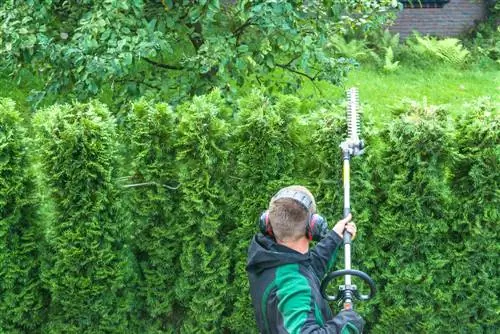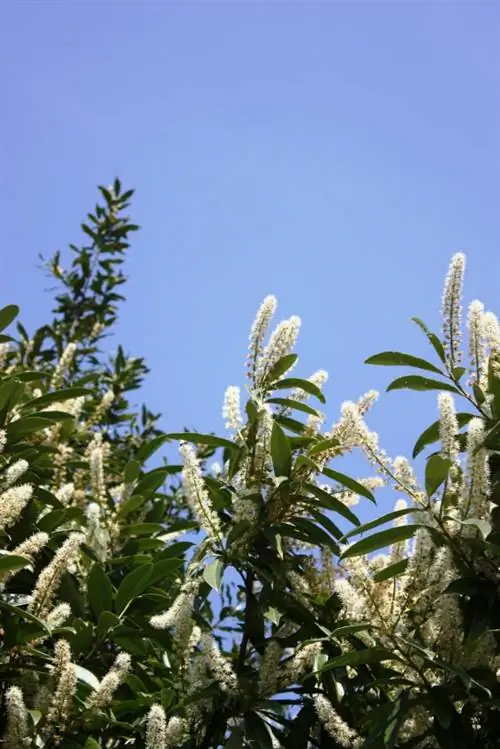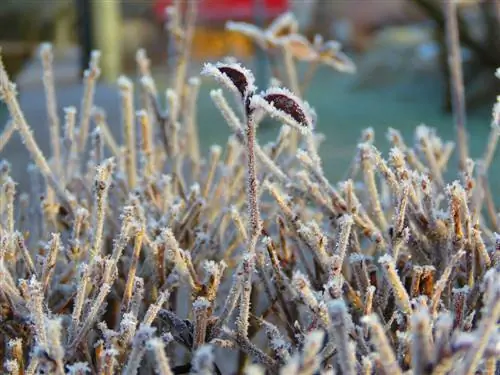- Author admin [email protected].
- Public 2023-12-16 16:46.
- Last modified 2025-01-23 11:21.
If you simply let a privet grow, it can reach a considerable height. However, it is often shortened as a hedge. How tall can privet get and how fast does it grow?

How high can a privet grow?
A privet can grow up to four meters high in the wild and grows very quickly, with annual shoot growth of up to 50 cm. In gardens, however, the height is often adjusted to personal preferences through regular pruning.
How tall does privet grow?
In the wild, a privet can grow up to four meters high, depending on the variety. This is not desirable in the garden, which is why the shrub is cut regularly.
This is also important, otherwise privet will go bald over time. This is because daylight no longer reaches the lower regions of the bush. However, light is needed so that the privet can develop new shoots and leaves.
That's why privet should not be grown in shady areas, but rather in a sunny to semi-shady location.
- Up to four meters high
- Shoot growth up to 50 cm per year
- Blooming twice a year
Short the height of the privet hedge
How high the privet hedge will be in the garden depends on your personal wishes. You can create a huge privacy screen on the fence, or just create small boundaries within the garden.
To reduce the height of the privet, simply cut it down in spring or fall. You should not simply shorten the bushes straight, but rather let them taper to prevent the lower areas from becoming bald. More light then falls into the lower hedge area.
Privet is very fast growing
Privet grows very quickly. The shoots can grow up to half a meter in length per year. If they are not cut, they will not branch as much. That's why they are shortened so that the privet hedge becomes nice and dense.
Privet tolerates pruning very well. Even if you cut it into old wood or on a stick, it will sprout again reliably.
Blooming twice per year
Like most hedge plants, privet sprouts twice a year, in spring and August. A later shoot can occur if the bush is cut again in autumn.
Tip
If you shorten or thin out privet, follow your municipality's regulations. In the warm season from April to September, heavy cutting is not permitted in order not to disturb breeding animals.






